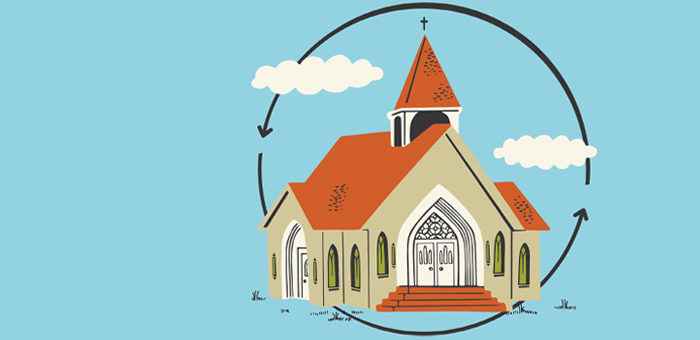Daniel Aleshire has been executive director of The Association of Theological Schools since 1998 and oversees the work of both the association and its Commission on Accrediting. While at ATS, he also served on boards and committees of other accreditation organizations. Aleshire holds several degrees including an M.Div. from The Southern Baptist Theological Seminary and Ph.D. from George Peabody College for Teachers, which is now part of Vanderbilt University. He is the author of “Earthen Vessels: Hopeful Reflections on the Work and Future of Theological Schools.”

In Today’s Conversation, Leith Anderson and Dan Aleshire talk about trends in theological education, including most popular degree programs, student gender ratios, and what makes a seminary successful.
In this podcast, you’ll hear the expert on theological education in the United States share:
- How changing expectations of pastors have impacted seminary training;
- How seminaries have adapted to distance and online education;
- What evangelicals can learn from mainline and Catholic seminaries; and
- What seminaries need to do in the next 20 years to continue being effective.
Read a Portion of the Transcript
Leith: Let’s start with the basics. What is a seminary? I actually googled “seminary.” And there are a lot of different definitions, so I guess we need yours.
Dan: I think that the definition that the Association of Theological Schools works with is that it’s an institution that provides education for the practice of ministry. And in the ATS case, they would be schools that operate at the post-baccalaureate level. A seminary has lots of other things that it’s doing, and the scope of things that it does is ever increasing. But I think that at the heart of it, seminary education is education for persons who want to pursue or are actively pursuing some form of ministry.
Leith: So, let’s get some statistics, just so we can understand — not just for those that are involved in higher education, but for those that aren’t. Let me just rattle off a whole list of questions, and you can just pick the ones you want to answer. I want to know: How many seminaries are there? What is their size? What percentage of them are evangelical – what percentage of the students and what percentage of the seminaries? Are students, are they mostly men or women, or younger or older? And which degree programs are most and the least popular? And how long to people go to seminary before they get their degree? Just give us a picture of the stats.
Dan: Let me talk from the subset of all theological schools that are the 270 schools that are members of ATS. There are lots of other schools that are related to a particular church or a particular neighborhood that are not degree granting or not related to ATS. And so, I’ll leave that unknown number out of my response, Leith.
ATS has about 270 member institutions in the United States and Canada. And about 110 of them, we classify as evangelical Protestant. About another 100 or so are classified as mainline Protestant, and the remaining schools are Roman Catholic or Orthodox. Together those schools enroll about 76,000 students. The dominant degree program that has the plurality of the enrollment is the Master of Divinity, and that would be the case across all those ecclesial families. The highest concentration of M.Div. enrollment would be among Roman Catholic schools, and probably the lowest concentration of M.Div. enrollment would be among evangelical Protestant schools.
The two largest age groups of students in ATS schools are students under 30 and over 50. Those two groups constitute about 54 percent of the total enrollment. We thought one time that we should rename ATS as the Association of Schools of Parents and Their Children. We have two very different age groups. At one time, it appeared that folks were leaving careers and entering ministry, and students in their 30s and 40s were a large group. That group has as a percentage of enrollment has shrunk, and the group that has grown most fast over the last 10 or 15 years are students over 50.
We’re not quite sure what all that means. Our hunch is that one: The Baby Boomers — that bulge in the population — have gotten older, and they’re still going to seminary. The other is that these are not career changers; they’re career completers. They’ve taught school for 30 years. Or they’ve been in the military, or they’ve been government workers of one sort or the other. Or they’re in professions where they’re able to do 30 years of service, and then they are looking for something to do and feel a call to ministry for the last 10 or 15 years of their working careers.
Almost 40 percent of the students in ATS schools are either visa students or students of color. That’s a significant phenomenon. It has been the percentage of African descent, Asian descent, Hispanic descent students has been increasing steadily since the 1970s, and we anticipate that at least 50 percent of the ATS enrollment — including visa students — will be persons of color before the U.S. population actually changes to majority persons of color sometime in the decade of the 2040s.
Share the Love
If you enjoyed the program, please rate it on iTunes and write a brief review. That will help get the word out and raise the visibility of the show.
Today’s Conversation is brought to you by the University of Northwestern – St. Paul.



 View All Podcasts
View All Podcasts 






























